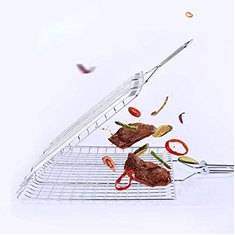LISTING OPTIMIZATION FROM A DIFFERENT POINT OF VIEW: PRODUCT LISTING IMAGES
Right after your title, listing images are the most important aspect of your listing
Why is Photography Important?
We are visual beings by nature. Our wallets often follow our eyes – especially in a world governed by mobile shopping. It doesn’t matter how groundbreaking your product is if people aren’t clicking on it because its purpose is unclear or they hate the way it looks.
Ask yourself:
What about an Amazon listing turns you off immediately?
Go to Amazon right now and search for any product. How do you feel about the first three main images you see? Which product would you buy going off image alone? Don’t think about it long, this is a gut reaction. Unfortunately, a large part of Amazon purchase habits are based on judging a book by its cover. Customer buying habits are based on visuals – cater to it. Get them in the door early, then make the sale with stellar listing content.
Amazon Image Listing Types
Main Image: White background, do not show products that aren’t being sold/shipped by your listing. Keep in mind, Amazon enforces some policies loosely. Food-related products, some apparel products, and clear or transparent products are often allowed to use select props in their photography. Use only props that help with product context.
Infographic: Informative/augmented photos or bullet points. Use this real estate to continue selling in image form. Not to be used as your main image.
Lifestyle: Your product in action. Get creative visually help your customers understand when, where, and how they can use your product.
Lifestyle images are images that depict the product in its suggested use. Dog treats with a dog, a family enjoying a board game, a child with a teddy bear, etc. Having a human face in the image (instead of just a hand) can potentially raise conversion rate up to 38%, especially if the depicted model is similar to your target audience. Telling a story with the images (like a storyboard) also helps.
General rule of thumb: Use at least 7 total images
Some categories or products with enhanced brand content status allow videos or other custom media.
What is the Niche Theme?
What is common among the photos of your competitors? How can you put a new twist on an exhausted concept? Be unique but not so different that you separate yourself completely from the market.
Measure Twice, Cut Once
Plan to take variations of each type of image. 2-3 main images. 1-2 infographics (product dimensions graphic or bullet points). 3-4 lifestyle images If you’re enlisting a product photography company, remember – they didn’t do the research you did. Don’t count on them to execute your vision in one image. Give yourself options.
Bonus 1: Show examples to people you know or split-test online – get feedback.
Bonus 2: You can always switch images in and out after the listing is up.
Bonus 3: Get creative – showcase 3-4 photos in one “image”
About Image Specs
The first 7 images are seen in the listing without clicking ‘more’. You can have up to 9 images. If eligible for video (through EBC from the Brand Registry), videos go in the 7th slot. To be as high-res as possible so that customers can zoom in, make sure your images are at minimum 1000 pixels per side. 2000-3500 pixels are recommended. Main image needs to be on a white background with nothing else in the image (no props, even a model or hand, with the exception of the apparel category. The idea is that everything in the main image is what the customer can expect to receive. Fill up the frame as much as possible (get as close to the edges as you can). No badges, logos, text, URLs, etc. allowed on the main image. Amazon can close your listing if this is violated. You can show your item packaging in your main image if it is unique and will improve your listing. Images 2-9 should show scale somehow. Use a hand, standard object (coins, phone, etc.), model, etc. to accurately depict your product’s size. Size misconception is a common customer complaint; customers don’t generally read and measure provided dimensions – they just look at the images and make assumptions.
A Few Notes on Lifestyle Images
With your lifestyle images you want to establish an emotional connection: “This could be you.” Always keep your target customer demographic in mind. Look outside of Amazon for lifestyle image ideas. Pinterest is a great place for inspiration.
Split-Testing with PickFu
It’s not what you think about your photos, it’s what your customers think. Don’t let your personal opinions get in the way. PickFu targets and polls select demographics of amazon buyers.
For example, say you were pooling a group of 50 people – Amazon prime members only. You want to collect not only their image preference, but their reason why as well.
Enter your poll question (Ex: “Which would be the best MAIN image that shows up in Amazon search for a Garlic Press?) Add your image choices. Choose audience. Wait couple of hours for results. View results and vote breakdown. How many 1st, 2nd, and 3rd place votes each image got as well as each image’s overall score.
Examples of Customer Feedback
Photos showed things interacting with product clearly displayed product’s proportions. Color contrast, easy to see product clearly. Photos that show depth, all dimensions. Blurry background, too artsy. Difficult to see product. Cannot tell how big or small the product is.
Use this valuable feedback to find a consensus and choose your images accordingly. For a complete look at the specifics of product image requirements, check out the Amazon Terms of Service.
Plan and execute your Amazon photography gameplan before you launch your product.
EXAMPLES OF HOW A CLIENT BEFORE AND AFTER PICTURE RESULTED IN 150 % SALES
Images Before


Images After


